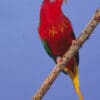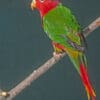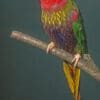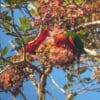Fairy Lorikeet
Also known as:
Little Red Lorikeet, Little Red Lory, Fair Lorikeet
Also known as:
Little Red Lorikeet, Little Red Lory, Fair Lorikeet
DID YOU KNOW?
The calls of the Fairy Lorikeet vary geographically. Western individuals produce a nasal sound; eastern birds are sweeter and more staccato.

Charmosyna

pulchella
Size:
18 cm (7 in)
Weight:
24-34 g (0.8-1.2 oz)
Subspecies including nominate:
two: C.p. pulchella, C.p. rothschildi
Colour Adult:
C.p. pulchella: Male-dark green back, wings and upper tail coverts; blue rump; purple/black spot on hindcrown; breast and occasionally lower flanks streaked with yellow; thighs purple/black; uppertail green tipped with yellow, with central feathers red towards middle and tips. Beak orange/red. Eye yellow/orange. Female-lower back green/yellow on sides; sides of rump to flanks yellow.
C.p. rothschildi: Male-green breast streaked with yellow; black spot on hindcrown reaching forward to area behind eye and continuing as black wash on hindneck to meet green mantle; purple/black on abdomen; upper tail coverts suffused with yellow. Female-wide green chest band with yellow streaking; green/yellow spot on side of rump.
Colour Juvenile:
C.p. pulchella: Green crown and nape; breast washed green with yellow streaking absent or minimal; green rump; thighs dark green washed with black; underwing stripe dull yellow. Beak dark brown. Eye brown.
C.p. rothschildi: Dull green breast with yellow streaking absent or minimal.
Call:
Call notes vary from area to area; in west sounds are nasal, in the east sweeter and shorter.
More Information:
Content Sources:
CITES
BirdLife International
Cornell Lab of Ornithology/Birds of the World
Parrots: A Guide to Parrots of the World, Juniper and Parr, 1998
Parrots of the World, Forshaw, 2006. 2010 edition
Parrots of the World, Forshaw and Cooper, 1977, 1989
Lexicon of Parrots, Thomas Arndt.
Parrots in Aviculture, Low, 1992.
Parrots: Their Care and Breeding, Low, 1986.
Captive Status:
Small numbers in captivity.
Longevity:
—
Housing:
Enclosure with well-drained floor, suspended over a concrete base, or indoor cage 1.2 m (4 ft) long in room with tile on walls and floor.
Diet:
Nectar, either a commercial mix specially formulated for small species, or a mixture of baby cereal (lactose-free), honey and malt extract or molasses, mixed with water (filtered or bottled), made fresh once or twice daily; fruits such as: apple, orange, cactus fruits, pears. Avoid protein as may cause reaction.
Enrichment:
Provide bird-safe flowering branches (unsprayed); also provide shallow dish for daily bathing. Use climbing toys such as ropes and swings.
Nest Box Size:
5″ x 5″ x 10″ (12.7 cm x 12.7 cm x 25.4 cm) vertical box.
Clutch Size:
2
Fledging Age:
8.5 weeks
Hatch Weight:
—
Peak Weight:
—
Weaning Weight:
—
World Population:
Unknown, decreasing.
IUCN Red List Status:
Least Concern
CITES Listing:
Appendix II
Threat Summary:
The species is reported to be abundant in some areas but scarce in others. Trade is generally low. Is considered to have a medium dependency on forest habitat and tree cover is estimated to have declined by 1.9% within its range over the past 10 years. It is tentatively suspected that this may have led to a 1-19% decline in its population over the same time frame.
Range:
C.p. pulchella: Mountains of New Guinea, excluding Cyclops Mountains.
C.p. rothschildi: Cyclops Mountains and northern slopes of mountains above Idenbreg River, West Papua.
Habitat:
Found in montane forest, forest edge and secondary growth from 750-2300 m (2460-7544 ft).
Wild Diet:
Takes pollen and nectar. Large Melicope trees appear important, as do Elaeocarpus and Syzygium.
Ecology and Behaviour:
Found in pairs, or flocks of 15 or more individuals. Groups with other Charmosyna lorikeets in the tops of flowering trees.
Clutch and Egg Size:
2 rounded eggs, 19.0 x 16.0 mm (0.7 x 0.6 in)
Breeding Season:
January-April. Nest is in cavity at the base of an epiphyte.
Related Links:
—
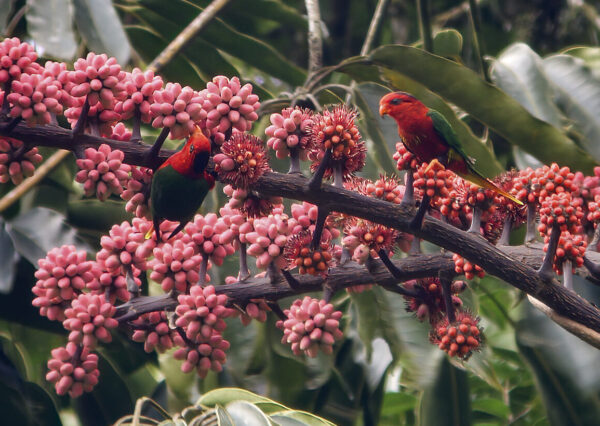
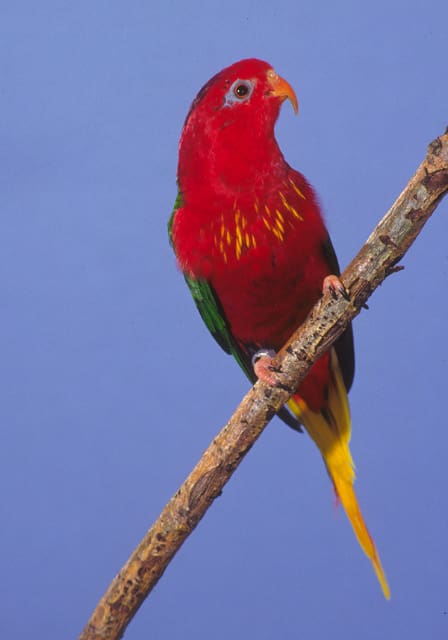
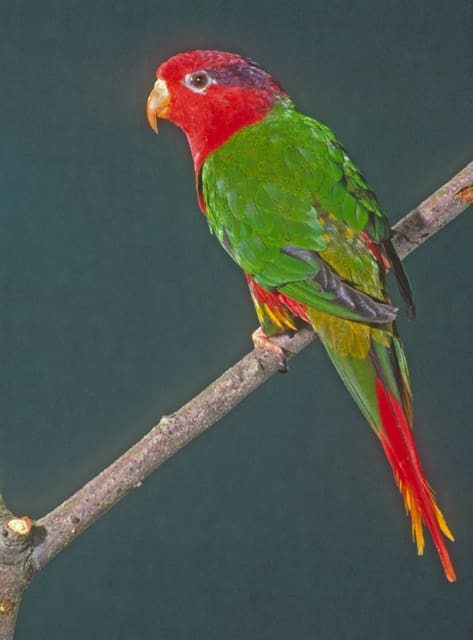
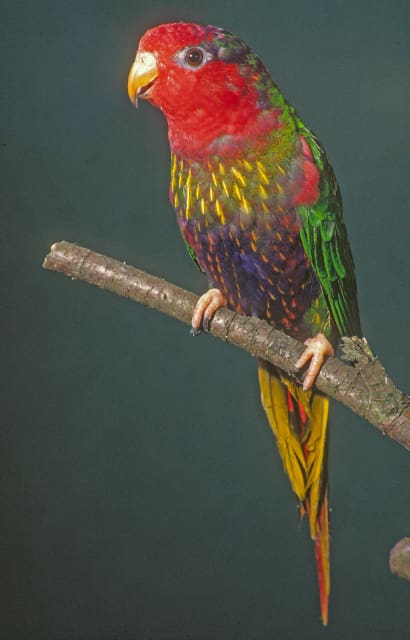
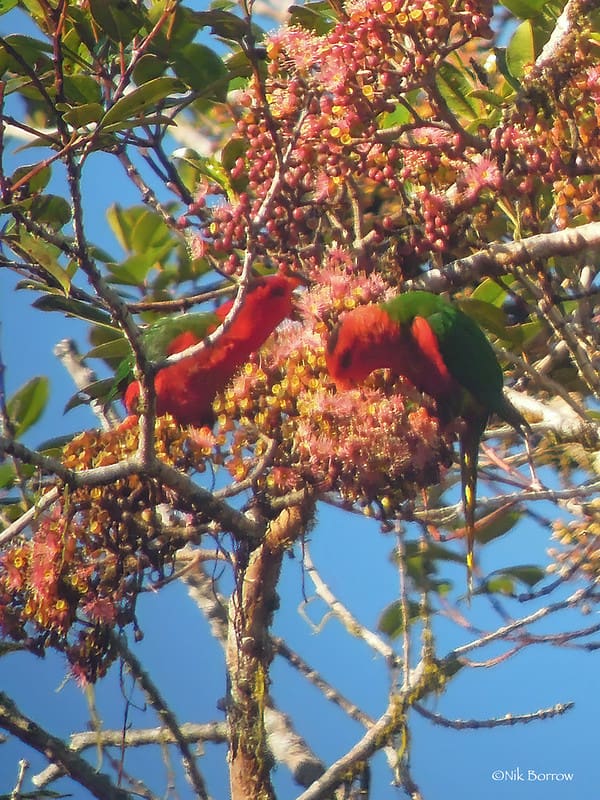
![© Nick Athanas [CC BY-NC 2.0] via Flickr Wild Fairy Lorikeets feed on nectar and blossoms](https://parrots.org/wp-content/uploads/1990/04/Fairy-Lorikeet-lg-Nick-Athanas-e1733262167705-100x100.jpg)
